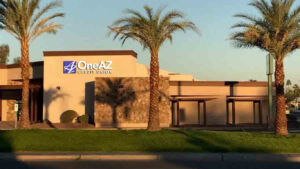You built a website for your current size. Now your business is growing and your website can’t keep up. Adding new features breaks things. The structure doesn’t accommodate expansion. You’re realizing you built something that works now but won’t work in six months. Starting over sounds expensive and frustrating, but limping along with an inadequate site costs you more.
1. You Didn’t Plan For Growth And Now You’re Stuck
Your original website was designed for exactly what you needed then. Small product catalog. Basic contact form. Simple structure. Nobody thought about what happens when you triple your product line or expand services.
Now you’re trying to shove growth into a framework that wasn’t built for it. Everything feels like a workaround. Nothing integrates cleanly. You’re essentially driving a compact car but your business needs a truck. Scalable websites are built with growth in mind from the start, with architecture that expands smoothly instead of breaking.
2. Adding Features Requires Complete Rebuilds Every Time
Want to add e-commerce? That’s basically a new website. Need a customer portal? Complete overhaul required. Every feature addition becomes a major project because your site wasn’t built modularly.
Professional Calgary web developers build sites with modular architecture where new features integrate smoothly without reconstructing everything. Each piece connects cleanly to the whole without disrupting what already works. This approach costs slightly more initially but saves massively over time by making expansion straightforward instead of catastrophic.
DEEPER DIVE: Top 10 Arizona ZIP codes people are moving to in 2025
LOCAL NEWS: 100 best places to work and live in Arizona for 2025
3. Your Site Can’t Handle Increased Traffic
Your hosting was adequate when you got fifty visitors daily. Now you’re getting five hundred, and your site keeps crashing. Slow load times. Occasional outages. Frustrated visitors going to competitors with reliable sites.
Scalable hosting grows with traffic demands. Starting small is fine, but your infrastructure needs to accommodate growth without requiring migration to entirely new systems. Cloud hosting, load balancing, CDN integration. These sound technical, but they’re what keeps sites running smoothly as traffic increases instead of collapsing under success.
4. Content Management Is A Nightmare
Adding a simple blog post requires developer assistance. Updating product information takes hours. Your content management system is either too complicated or too limited. Managing content shouldn’t require technical expertise or outside help every time.
Flexible CMS platforms let non-technical staff handle routine updates independently. Your team should add content, update information, and make changes without needing developers for every minor adjustment. Scalability includes operational scalability, not just technical capacity.
5. Integration With Other Tools Is Basically Impossible
Your business added CRM software. Email marketing platform. Inventory management system. None of them connect to your website because integration wasn’t considered originally. Everything’s a separate island requiring manual data transfer.
Modern scalable websites integrate smoothly with standard business tools. APIs, webhooks, proper architecture that allows different systems to communicate. When your website plays nicely with other software, your entire operation runs more efficiently.
6. Mobile Performance Gets Worse As You Grow
Your original simple site worked fine on mobile. As you added features and content, mobile performance degraded. Now mobile users get a bloated, slow experience that drives them away.
Scalable design maintains performance across devices as complexity increases. More features shouldn’t mean worse mobile experience. Proper optimization, lazy loading, responsive design that accommodates growth. Mobile users are too valuable to sacrifice because your site got too heavy.
Conclusion
Scalable websites require intentional architecture from the start. Planning for growth, modular construction, infrastructure that handles traffic increases, manageable content systems, tool integration capability, and maintained mobile performance all determine whether your site grows with you or holds you back.
Building scalability costs more initially but prevents the much larger cost of completely rebuilding when your business outgrows a site that wasn’t built to expand. Growth should empower your business, not force expensive website emergencies.




